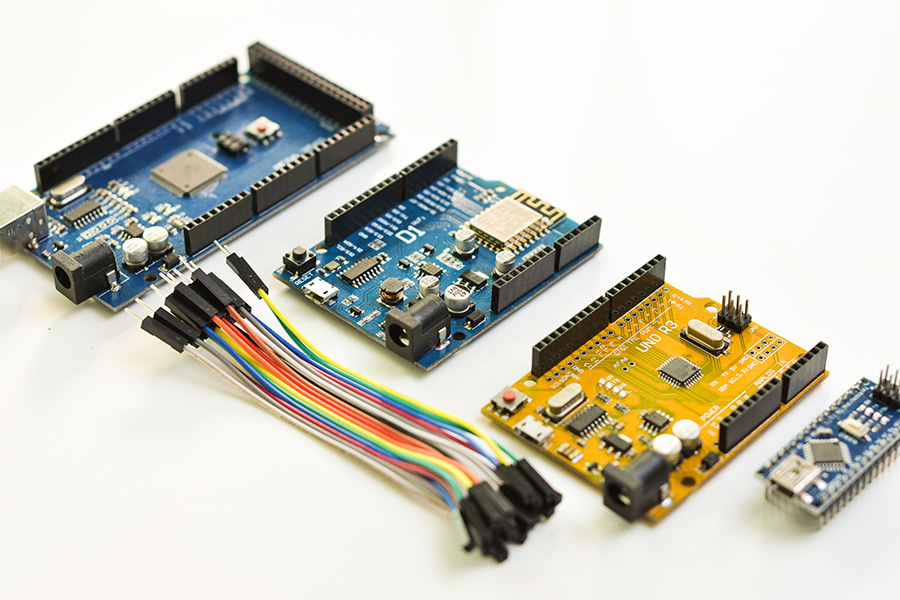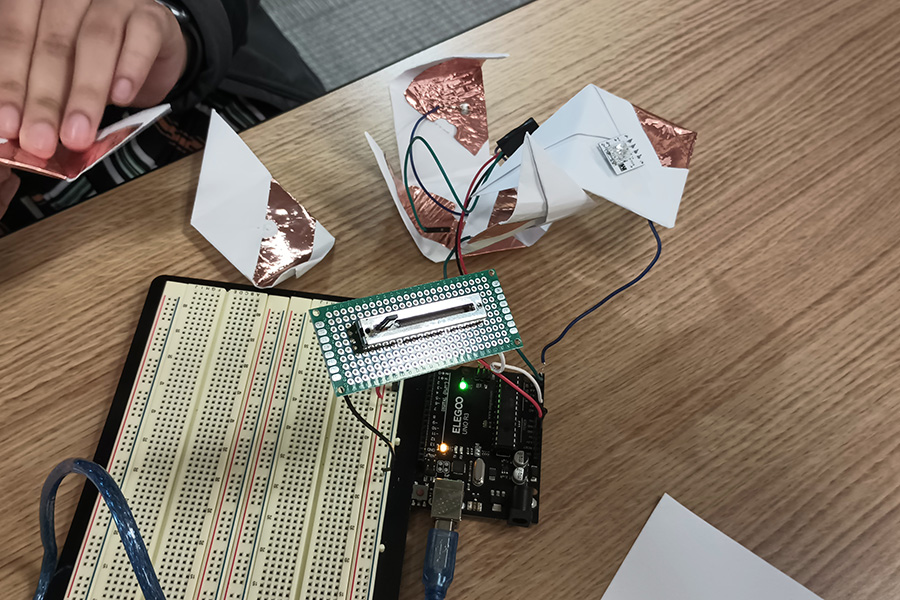
Getting Started in Electronics
By Giordana Verrengia
Media InquiriesA new course in the Department of Electrical and Computer Engineering aims to bring all students closer to the discipline, even non-majors. Assistant teaching professor Tom Zadjel is the instructor for Getting Started in Electronics, which, he says, is meant to be a way of reaching out to students outside of the College of Engineering.
This course is built around experiential learning. In a typical week, students attend two lectures and a three-hour lab session where they build circuits according to the lessons covered in class. The three main concepts of circuit design, prototyping, and debugging are anchored by hands-on skills that students grow more comfortable with over the course of the semester, such as using electronic measurement tools; processing signals with microcontrollers; and reading and understanding electrical component data sheets.
Zajdel spoke of the benefits of learning skills from outside your intended major.
“Any time you can learn new skills, you become more versatile and better prepared to tackle real-world challenges. That often requires stepping outside the comfort zone of your major to learn best-practices from other disciplines,” Zajdel says. “Skills are like compound interest–they will open up new projects and opportunities to you, which in turn will make it easier for you to learn new skills in a virtuous cycle.”
Enrollment has increased since the debut of Getting Started in Electronics in fall 2022, but Zajdel hopes that even more students will feel inspired to join. While the benefits of circuit building are obvious for aspiring engineers, non-STEM majors are encouraged to take the class as a way of improving their technical literacy, which could come in handy in other pursuits.
Jiatong Li, a rising junior studying Information Systems in the Dietrich College of Humanities and Social Sciences , took Getting Started in Electronics when it debuted in Fall 2022. She remembers that her classmates were a mixture of undergraduate and graduate students, almost none of whom had an engineering background.
“If you don’t know anything about engineering, it’s a good introductory class and it’s not that stressful to manage,” Li said. She described the class structure as very informal and relaxed. During lectures, Zajdel would use a whiteboard to go over content while teaching assistants made sure that students were following. It was easy to ask questions without feeling intimidated or embarrassed.
The skills that students built during their weekly lab sessions culminated in a final hack project at the end of the semester to be presented at an exhibition. Li designed an automated plant-watering sprayer, which she hoped would come in handy for the succulents in her dorm room while she was away for winter break.
“I like that I can actually apply what I learned towards something that’s applicable to me, not just labs and projects that are assigned to me,” Li said of preparing for the exhibition.
Zajdel is tweaking the syllabus to add more self-directed learning opportunities.
“This summer, I am working on leaving more room for experimentation and creativity throughout the class. Students will work on a few smaller design projects, allowing them to express themselves through electronics a few times before working on their final projects.”
Students can register for Getting Started in Electronics (18095) in SIO.
